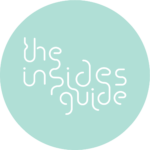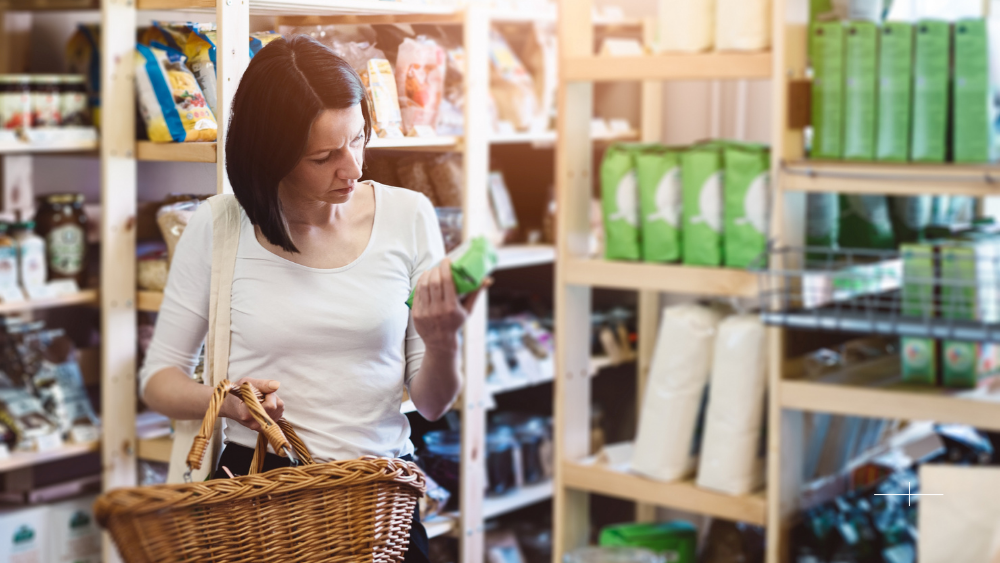Food-label warnings such as ‘May contain traces of gluten’ and ‘Processed on the same line as gluten-containing cereals’ can be tricky to interpret. If you have coeliac disease or are highly sensitive to gluten, chances are you’ll be a little confused about this grey area of labelling. Here, I’ll give you the information you need to decide whether foods with this type of precautionary warning have a place in your pantry.
What does ‘May contain gluten’ mean?
‘May contain’, ‘May contain traces of’, ‘Processed on equipment also used for gluten-containing cereals’ are different ways to say the same thing: that there’s a risk of a very low level of gluten cross-contamination. This risk may come from the growing, harvesting or processing stage of one of the added ingredients or the finished product.
What doesn’t it mean?
Precautionary warnings don’t mean gluten is present at a detectable level (>3ppm of gluten — visualise 3 crumbs of gluten among a million gluten-free crumbs). It’s against the law (Food Standards Australia and New Zealand) to put a ‘May contain’ warning on a food that contains detectable gluten. It’s also against the law to put a precautionary warning on a product that claims to be gluten free.
Even if a food is labelled with a precautionary warning statement, manufacturers must have processes and procedures in place to ensure that any possible gluten cross-contamination is present at the lowest practicable level, doesn’t exceed 3ppm and is controlled.
‘May contain gluten’ statements aren’t regulated
Precautionary warning statements are voluntary, so manufacturers can choose whether or not to put them on their products. This means it’s impossible to tell whether foods that are gluten free according to their ingredients but not labelled gluten free have a lower risk than those with a precautionary warning statement. You would expect, though, that the majority of foods without a ‘gluten free’ claim are made in a facility that also makes gluten-containing food. This means that in most cases, it’s possible that a tiny trace of gluten could have entered the food i.e. it ‘may contain’ gluten.
Are food companies self-protecting?
It’s often assumed that food companies are using ‘May contain’ statements simply to protect themselves. This may be the case in some instances, but I don’t think it’s typical. Large food companies are staffed by people like you and me. They don’t want to make their customers sick or face food recalls or fines. Most food companies use these statements to inform consumers that there’s a risk that very a low level of gluten is present.
We’re well protected
As I’ve mentioned, in New Zealand and Australia, food manufacturers must declare gluten when it’s present at a level above 3ppm. In England, the US and most of Europe, food manufacturers must declare gluten when it’s present at levels above 20ppm. So we have a lower limit of how much gluten a ‘may contain’ food could possibly have. This makes us well protected.
Eating out and at home
Every item of food from a restaurant or café that also makes gluten-containing food is a ‘may contain’ food. I believe that the risk of eating out is far higher than with packaged food (my next online guide will be on this topic, so make sure you’ve signed up to my email list so you know when it’s available!).
Food cooked in a home kitchen where gluten is present is also ‘may contain’.
How much gluten makes someone with coeliac disease sick?
A 2019 review (35 studies) of coeliac disease research concluded that although the amount of tolerable gluten varies among people with coeliac disease, a daily gluten intake of <10mg is unlikely to cause gut damage1. Let me apply that finding to our topic:
- As mentioned, 3ppm is the highest amount of gluten permitted in foods with a ‘May contain gluten’ label. 3ppm equals 0.003 milligrams of gluten per gram of the food.
- If you ate 100g of crackers and they had exactly 3ppm of gluten in them, that would mean you’d eaten only 0.3mg of gluten.
- To reach 10mg of gluten, you’d need to eat around 3,300g of a food that contained 3ppm of gluten. For reference, a loaf of Allergywise white bread weighs 670g.
- If you eat a very large amount of ‘may contain’ foods in one day, it’s possible you will exceed the limit that may cause gut damage.
- If you eat a small to moderate amount of ‘may contain’ foods, you’re unlikely to.
Coeliac society advice
Coeliac Australia has this to say: “Research into the use of precautionary (‘may contain’-type) statements in Australia has shown that manufacturers tend to overuse rather than underuse them. Part of what we do involves working with manufacturers where we can to minimise the unnecessary use of precautionary labelling to maximise food choices without compromising food safety”. Coeliac Australia recommends that those with coeliac disease avoid eating food with precautionary warning statements relating to gluten.
Coeliac New Zealand doesn’t suggest outright avoidance of these foods, as it’s recognised that this may unnecessarily limit your food choices. Instead, they recommend using caution.
What does this mean for you?
Considering the above, this is my take on whether to eat foods labelled with a precautionary warning:
- If ‘may contain’ foods are eaten in small amounts, they’re very unlikely to cause you gut damage.
- The more of these foods you eat in one day, the higher the chances are that you’ll exceed the daily limit that may cause gut damage. Eating plenty of unprocessed foods i.e. fruit, vegetables, plain meat, eggs, milk, etc will reduce your chances of this happening (and be healthier for you than many packaged foods).
- Eating foods that are gluten free by nature of their ingredients (and don’t have either the words ‘gluten free’ or a precautionary warning on their label) are unlikely to cause you gut damage. Contacting the manufacturers of these foods is a way to evaluate whether a company takes allergen management seriously. I’m not sure this is particularly useful, though, as you’re unlikely to find such a company that guarantees their products are 100% gluten-free. Most of these foods are made in premises where gluten is present, or with ingredients made in premises where gluten is present.
- Wash and sort your dried lentils and pulses. With this type of product, it’s more likely that you’ll find a rouge grain of wheat, rye or barley (and I have!). Always pop them into a sieve, visually check them and rinse them well. If you do find a grain that looks suspicious, please report it, as a recall of that batch and a change of labelling may be necessary to protect others.
- Try not to become fearful or stressed about foods with precautionary label warnings. New Zealand and Australia have stricter rules relating to gluten than most of the developed world, so you’re well protected. Your focus should be on removing foods that contain detectable (>3ppm) gluten. If you’re not yet an expert at identifying gluten on a food label then click here to take my ‘Is it gluten free?’ online guide.
- Use your symptoms to guide you. If you notice that a specific ‘may contain’ product isn’t agreeing with you, swap it out for something else and carry on.
- Most importantly: be sure to have your blood antibody level checked yearly. This will help to identify whether you’re inadvertently eating gluten. If you’re feeling well and your blood antibody level is within the ‘normal’ range, just keep on doing what you’re doing!
Note: If you have a food allergy, the way in which you should interpret precautionary warnings may differ from these guidelines. Please seek professional allergy-specific advice.
To learn all you need to know about label reading take my knowledge-boosting online guide here.
Need personalised nutrition advice?
Elly McKenzie is a New Zealand-based nutritionist specialising in practical, evidence-based support for gut health, coeliac disease, irritable bowel syndrome, food allergies/intolerances, and general nutrition (including healthy eating, high cholesterol/blood pressure and pre-diabetes).
Consultations are available in person at her Mount Maunganui clinic (Tauranga) or across Aotearoa via secure Telehealth. Book a consultation or get in touch to learn more.
1. Al-Toma A, Volta U, Auricchio R, Castillejo G, Sanders DS, Cellier C, Mulder CJ, Lundin KEA. European Society for the Study of Coeliac Disease (ESsCD) guideline for coeliac disease and other gluten-related disorders. United European Gastroenterol J. 2019 Jun;7(5):583-613. doi: 10.1177/2050640619844125. Epub 2019 Apr 13. PMID: 31210940; PMCID: PMC6545713.


1 thought on “May contain traces of gluten”
Comments are closed.